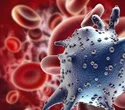New lab model brings hope for aggressive blood cancer research
Researchers working on an incurable blood cancer can now use a new lab model which could make testing potential new treatments and diagnostics easier and quicker, new research has found.
In a paper published in Nature Communications a team of researchers led from the University of Birmingham have studied blood cells from patients with a blood cancer called myelodysplastic syndrome disease (MDS). This disease often develops into a highly aggressive form of Acute Myeloid Leukaemia (AML).Working with this new model has led to confirmation that a mutation in the gene CEBPA causes progression from MDS to AML.
Behaved just like patient's real cells
The team set out to examine whether changes to the gene CEBPA were driving disease progression in patients with MDS, or whether mutations were a passenger as the blood cancer developed into the more serious AML.
The team took blood cells from a patient that was diagnosed with MDS and reprogrammed these cells into iPSCs using a genetic trick. Once obtained, these cells can give rise to any cell type of the body. They then used sophisticated cell culture methods to convert them into white blood cells and red blood cells in the lab. Using multiple tests, they showed that the lab-grown cells behaved just like the patient's real cells.
Using patient cells that were obtained early during disease progression without the mutation, the researchers were then able to modify the cells' genome to include the mutation in CEBPA gene as it happened in the patient two years after being diagnosed with MDS. This change made the disease more aggressive: it reduced the number of healthy cells, blocked the formation of white blood cells, aberrant cells were formed that divide more rapidly, even when they were treated with chemotherapy, mimicking what happened to the patient.
Prof. Constanze Bonifer, a Birmingham Emeritus Professor and one of the Senior Authors on the paper said:
"To show that this was true, we did not only study the behaviour of the in vitro generated cells but also looked at how every gene in the cell population changed its activity. The experiments revealed that adding the CEBPA mutation to the mix of mutations that were already there alters how DNA is organised in blood cells, which completely changed gene activity and pushed the cells on the path to malignancy. "
Dr. Paloma Garcia lead author of the study said: "Using iPSC cells to model disease processes is a new and exciting way of understanding how blood cancers develop and will significantly expedite our ability to find novel treatments."
The research group is open to collaboration, licensing, or partnering opportunities.
#ResearchChemistry, #ChemicalInnovation, #Science, #ScienceResearch, #ScientificResearch, #ResearchAndDevelopment, #ChemistryEducation, #ChemistryExperiments, #ChemistryLab, #ChemistryStudents, #ChemistryStudy, #OrganicChemistry, #InorganicChemistry, #PhysicalChemistry, #AnalyticalChemistry, #Biochemistry, #MaterialsChemistry, #TheoreticalChemistry, #AppliedChemistry, #MedicinalChemistry
Visit Our Website : researchchemistry.org
Nomination Link : researchchemistry.org/award-nomination/
Registration Link : researchchemistry.org/award-registration/
Member Link : researchchemistry.org/member-submission/
Contact Us: contact@researchchemistry.org
Social Media Links
Instagram : www.instagram.com/chemistryaward
Twitter : x.com/Chemistryaward
Pinterest : in.pinterest.com/chemistrymails



Comments
Post a Comment